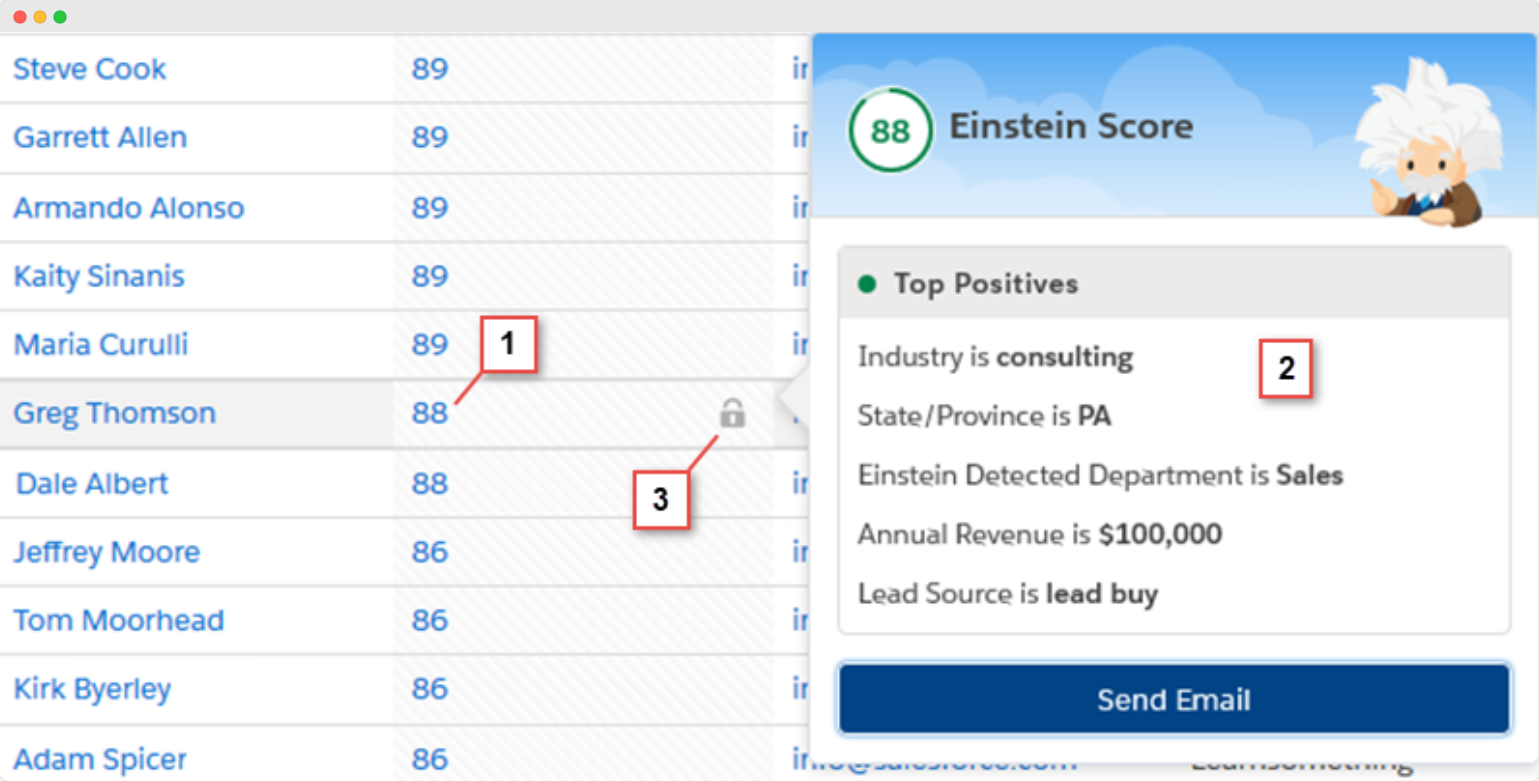Top 9 strategies for boosting lead conversion within Salesforce
Turning leads into paying customers is an essential goal in today's business world. And when it comes to managing customer relationships, Salesforce is the go-to tool for many companies. But here's the thing – making those conversions happen in Salesforce isn't always straightforward.

Table of contents
It takes proper strategy and know-how to boost lead conversion in Salesforce. That's where this article comes in. In this blog post, I'll give you some practical tactics that can help you boost your lead conversion rates within Salesforce.
Whether you're a Salesforce veteran or just starting out, these tips are designed to help you get more out of your CRM and turn those leads into loyal customers.
What is the lead conversion process?
In Salesforce, the lead conversion process helps businesses turn potential customers into active sales opportunities. It involves qualifying leads, gathering their information, and smoothly transitioning them into Salesforce opportunities, accounts, and contacts.
This process makes it easier for sales teams to manage and follow up on leads, leading to increased sales and better customer relationships. Before discussing nine strategies for boosting lead conversion, look at some prep work.
Salesforce's lead conversion settings
- Log into your Salesforce account and click the gear icon in the top-right corner. From the dropdown menu, select "Setup."
- In the "Quick Find" box on the left side of the "Setup" page, type "Lead Settings" and select it from the options.
- The "Lead Settings" page will display default settings related to lead conversion.
Watch how to set up your lead conversations step-by-step 🎬
Best practices for lead conversion in Salesforce
#1 Create lead personas
Before I talk about lead conversion strategies in Salesforce, you must learn who your leads are. You can't just sell to anyone. Every business has an ideal customer persona (ICP) that it caters to. Hence, the first step is to create a lead persona.
Creating lead personas involves developing detailed profiles of your ideal customers based on demographic, psychographic, and behavioral characteristics. By understanding your target audience, you can tailor your marketing efforts and sales approach to resonate with their specific needs and preferences.
#2 Generate and capture more leads
Defining your ICP is the zeroth step. The first strategy to boost the lead conversion process in Salesforce is generating and capturing leads. Salesforce also provides various tools and features to help businesses attract and capture leads effectively. One example is its web-to-lead feature.
This feature allows you to create custom lead capture forms directly within Salesforce and embed them on your landing pages. When visitors fill out the form, their information is automatically captured and stored as a lead in Salesforce. To maximize the effectiveness of your lead capture forms, ensure they are optimized for conversion by keeping them simple, straightforward, and easy to fill out.
To reduce friction and encourage submissions, use calls to action, offer valuable incentives (such as downloadable resources or exclusive offers), and minimize the number of required fields.
Regularly monitor the performance of your lead capture forms using Salesforce analytics to identify areas for improvement and optimize your conversion rates over time.
#3 Qualify your leads
Qualifying leads is essential for focusing your time and resources on prospects with the highest potential for conversion. The idea is to qualify leads based on their interest level. Salesforce identifies several methodologies for lead qualification, including "CHAMP," "MEDDIC," and "BANT."
CHAMP
Challenges, authority, money, and prioritization.
MEDDIC
Metrics, economic buyer, decision criteria, decision process, identify pain, and champion.
BANT
Budget, authority, need, timeline (and authority).
By implementing these lead qualification frameworks within Salesforce, you can ensure that your sales team focuses their efforts on leads most likely to convert.
#4 Prioritize leads with lead scoring
Lead scoring is a powerful technique for prioritizing leads based on their level of engagement and likelihood to convert. Salesforce allows you to create custom lead-scoring models tailored to your business goals and criteria.
- Start by defining the factors that indicate a lead's interest and intent, such as website visits, email opens, content downloads, and social media interactions.
- Assign each factor a numerical score based on its significance to your sales process.
- Use Salesforce's automation capabilities to track and calculate real-time lead scores based on predefined rules and criteria. Salesforce helps you with lead scoring through the Einstein Lead Scoring feature.

Now, no matter what data you initially get, regularly review and adjust your lead scoring model based on feedback from your sales team and performance data.
#5 Nurture leads through the sales funnel
Now that you have your ICP, qualify leads according to their interest and priority. The next step is to nurture them. Lead nurturing is building relationships with leads at every sales funnel stage, from initial awareness to final conversion.
Salesforce helps businesses nurture leads by offering email marketing automation, personalized content delivery, and lead tracking.
Here's what you can do:
- Start by mapping out your sales funnel and identifying key touchpoints where leads may require additional nurturing or support. Develop targeted content and messaging tailored to each stage of the buyer's journey.
- Use Salesforce's marketing automation tools to automate and streamline your lead nurturing efforts. For example, you could send personalized emails, alerts, and reminders based on predefined triggers and criteria.
- Track and analyze the effectiveness of your lead nurturing campaigns using Salesforce's reporting and analytics capabilities. Monitor key metrics, such as open rates, click-through rates, and conversion rates, to identify areas for improvement and optimization.
By consistently providing value and guidance throughout the sales funnel, you can build trust and credibility with your leads, increasing their likelihood to convert.
#6 Leverage technology for lead conversion
What's better than a good sales funnel? A sales funnel that uses advanced technology! Salesforce offers many tools and features to help businesses convert leads more effectively. This includes artificial intelligence, predictive analytics, and sales automation. One such tool is Salesforce Einstein, an AI-powered platform that uses machine learning algorithms to analyze data, predict outcomes, and automate repetitive tasks.
Salesforce also offers sales automation options, such as workflow automation, lead routing, and opportunity management, which help streamline repetitive tasks and optimize sales processes. By automating manual processes and eliminating inefficiencies, your sales team can focus its time and energy on high-value activities that drive results. Isn't that better?
#7 Multi-channel engagement strategies
Now that I have discussed sales funnels and engaging your leads, I want to include social media. Salesforce helps businesses connect with leads through various channels, including email, social media, live chat, and mobile.
Salesforce's integrated marketing automation tools can help you create personalized email campaigns that nurture leads and guide them through the sales funnel. You can also use social media platforms like LinkedIn, Twitter, and Facebook to engage with leads more personally, share valuable content, and build brand awareness.
💡 Pro tip
- Integrate live chat functionality into your website to provide instant support and assistance to leads, answering their questions and addressing their concerns in real-time.
- Use Salesforce's chatbots and automation features to handle common inquiries and streamline the lead qualification process.
By implementing a multi-channel engagement strategy within Salesforce, businesses can reach leads where they are, deliver personalized experiences, and, ultimately, drive higher conversion rates.
#8 Lead conversion
Now, onto your key strategy point – lead conversion. Lead conversion is the ultimate goal of any lead management process, transforming qualified leads into paying customers.
- Start by defining your lead conversion criteria and developing a standardized process for converting leads into opportunities and accounts within Salesforce.
- Clearly outline the steps involved in the conversion process, including qualification, validation, and follow-up, to ensure consistency and accountability across your sales team.
- You can use Salesforce's opportunity management tools to track and manage potential sales opportunities, including deal size, stage, probability, and close date.
#9 Data analysis and lead reports
Reports and data analysis are things that help you determine the effectiveness of your processes. For boosting lead conversion, you can use Salesforce to analyze data, including reporting, dashboards, and advanced analytics.
The norm is to start by defining key performance indicators (KPIs) and metrics to track the success of your lead conversion efforts, such as conversion rates, pipeline velocity, and customer acquisition cost. You can customize your Salesforce reports and dashboards to visualize these metrics in real-time, providing actionable insights for your sales team.
Start regularly analyzing your lead conversion data to identify trends, patterns, and correlations that may impact your sales performance.
You can also utilize Salesforce's advanced analytics features, such as predictive analytics and AI-driven insights, to uncover hidden opportunities and predictive trends in your data.
Keep your leads simple with Salesforce
Use these insights to make data-driven decisions, prioritize initiatives, and allocate resources effectively to drive better business outcomes. The idea is to step back and go the extra mile to have a holistic view of your lead conversion process.
Regardless of your platform, technology, service, or product, the lead generation and conversion process strategy is almost the same. However, doing so with Salesforce becomes much simpler. If you want to get the most out of your lead conversion, learn to start adapting your own lead conversion strategies, coupled with Salesforce's technical abilities.



